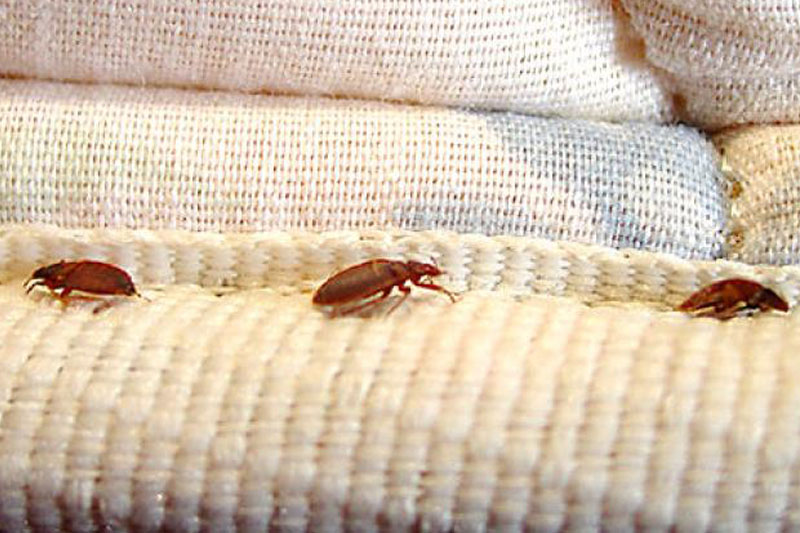Identifying Bed Bugs

Identifying Bed Bugs
IDENTIFICATION
Adults are small, brownish insects, just under a 1/4” long and are relatively flat. They are nearly as wide as they are long, and oval in shape. Immature bed bugs (nymphs) resemble the adults, but are much smaller and lighter in color. Newly hatched nymphs are translucent and are no bigger than a pinhead (1 mm).
BIOLOGY & BEHAVIOR
Bed bugs belong to the family of insects known as Cimicidae. All members of this family of insects feed exclusively on blood which they require in order to develop and reproduce. There are a number of closely related species in this family that feed on birds, bats and other animals. However, the species most adapted to living with humans is the common bed bug, Cimex lectularius, which is found world wide. The immature bugs go through five developmental stages before reaching maturity. A blood meal is required between each stage.
DISEASE & BITE SYMPTOMS
Although over 28 disease pathogens have been found in bed bugs, transmission of these pathogens to humans has never been documented and is considered highly unlikely. For this reason, they are not considered a serious disease threat. Their medical significance is mainly limited to the itching and inflammation associated with their bite. Not everyone reacts to bed bug bites in the same fashion. Some people have reactions that are delayed for several days or more, while others do not react at all.
SANITATION
The thought that bed bugs are the result of poor sanitation and/or poverty is a big misconception. Bed bugs do not discriminate based on one’s social status or the cleanliness of their home. The fact is that cleanliness has nothing to do with getting bed bugs. Bed bug infestations can occur in the most expensive hotels, multi-million dollar estates, as well as homeless shelters and everything in between, regardless of the existing sanitary conditions.
AVOIDING INFESTATIONS
It is important to remember that in order for a new infestation to become established, bed bugs must first be introduced into the previously un-infested environment. The best way to prevent a bed bug infestation is to avoid the activities that place you at risk for an infestation. Some activities are easier than others to avoid. For example it is much easier to avoid purchasing used items than it is to eliminate travel, having overnight guests, or sending children off to summer camp or college.
PROTECT YOURSELF WHEN YOU TRAVEL
There are many steps that can be taken when traveling to reduce the likelihood of staying in a bed bug infested environment and infesting your home when you return from your travels. Preventive measures begin with the type of luggage you have, how you pack, what you do when you arrive at your destination, as well as the steps you take when you return home. The extent to which you try to prevent an unanticipated encounter with bed bugs is directly related to the level of concern you have and how much you are willing to be inconvenienced.
HOW DO I KNOW I HAVE BED BUGS?
The only way to know for sure if you have bed bugs is to produce an actual sample of the bug itself. Do not automatically assume that any bite-like mark is a bed bug bite. Also it is important to realize that medical professionals cannot give a positive diagnosis simply by examining bite symptoms, they can only suggest some possible explanations for what may have caused the bites/symptoms to occur. If producing a sample is not possible, you may want to have a certified technician perform a visual inspect or have a canine inspection.
Call Apex Pest Control today for more information on how we can help you. 212-714-0848.
✓ Certified Technicians
✓ Extensive Industry Training
✓ Established in 1896
✓ Inspections
✓ Environmentally Conscious
✓ Full-Service Solutions
✓ FREE Consultations
✓ Maintenance Programs
✓ Rodent Exclusion
✓ Bed Bug Canine Inspections
✓ Guaranteed Satisfaction
✓ Emergency Service

